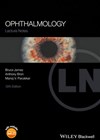You searched for "palsies"
Ophthalmology in the COVID-19 pandemic
The novel coronavirus pandemic has affected the whole world and forced all of us to think of new ways to manage our day to day personal as well as professional life. I am not going to talk about the clinical...EyeLogbook
1 June 2016
| David Haider
|
EYE - General
This issue we’re covering the recently updated EyeLogbook (www.eyelogbook.co.uk), the Royal College of Ophthalmologist’s (RCO) online surgical logbook. Back in March 2016 a fully re-designed version of the site was released. Not only does the new version bring a beautifully...
The medical student syndrome
1 April 2016
| Alysha Bhatti
|
EYE - Cataract, EYE - Cornea, EYE - General, EYE - Glaucoma, EYE - Imaging, EYE - Neuro-ophthalmology, EYE - Oculoplastic, EYE - Oncology, EYE - Orbit, EYE - Paediatrics, EYE - Pathology, EYE - Refractive, EYE - Strabismus, EYE - Vitreo-Retinal
It is often said that “a little learning is a dangerous thing,” but being super savvy can’t put us at the brink of harm, can it? Each year as thousands of students commence their medical degrees, they begin a journey...
The Story of Looking: Mark Cousins
Lake, Sweden, as featured in The Story Of Looking. In an interview with Director Mark Cousins about his relationship with sight and storytelling, Peter Cackett discusses Cousins’ recent film, The Story of Looking, and how its production informed, and was...A life outside ophthalmology
3 April 2023
| Katie Curran, Lloyd Paul Aiello (Prof), Tunde Peto
|
EYE - General
Lloyd Paul Aiello. It was an absolute privilege to speak to Lloyd Paul Aiello, Professor of Ophthalmology, Harvard Medical School, and Vice President of Ophthalmology and Director, Beetham Eye Institute, Joslin Diabetes Center, USA. Prof Aiello is a third-generation ophthalmologist,...
A personal reflection: working at the International Centre for Eye Health from 2006–2024
3 April 2024
| Nick Astbury
|
EYE - General
I feel incredibly fortunate to have been working part-time at the International Centre for Eye Health (ICEH) [1] since 2006. Earlier in my career, the responsibilities of work and a growing family made this merely an aspiration, and apart from...
Cementing a VISION 2020 LINK partnership between Blantyre and Liverpool – building capacity for DR services alongside research
1 August 2016
| Petros Kayange, Gerald Msukwa, Michael Briggs, Marcia Zondervan, Nicholas Beare
|
EYE - Cataract, EYE - Cornea, EYE - Glaucoma, EYE - Imaging, EYE - Neuro-ophthalmology, EYE - Oculoplastic, EYE - Oncology, EYE - Orbit, EYE - Paediatrics, EYE - Pathology, EYE - Refractive, EYE - Strabismus, EYE - Vitreo-Retinal, EYE - General
Malawi is a small land-locked country in eastern Africa with a growing population of over 17 million people. About 45% of the population is aged 14 or under; only 5% are aged 60 or over. The gross national income per...
Diary from my elective: a Parisian experience
2 December 2019
| Nikolaos Tzoumas
|
EYE - General
The author explains how a research institute’s dedication to multidisciplinary collaboration helped him to discover a passion for academic ophthalmology. The elective aspect to the final year of a medical degree, through its change of scenery and immersion into another...
Ophthalmology research: lessons from the Academic Foundation Programme
14 December 2020
| Alexander Mehta (Dr)
|
EYE - General
The author discusses practical lessons learned during eight months of ophthalmology research as a guide for candidates considering a research themed AFP post, with general tips for anyone undertaking research whilst balancing clinical duties. Ophthalmology is already one of the...
New speaker for the SEE Summit
The Association of British Dispensing Opticians (ABDO) has announced another speaker for the SEE Summit. Former GP Dr Matt Sawyer runs an environmental sustainability consultancy, SEE Sustainability, working to improve human and planetary health.Ophthalmology Lecture Notes (Twelfth Edition)
1 October 2021
| Omar Mostafa
|
EYE - General
During medical school, our seniors often told us that the easiest way to remember something is to understand it. And rightly so, when I came across the Ophthalmology Lecture Notes textbook as a student I realised that the key to...





